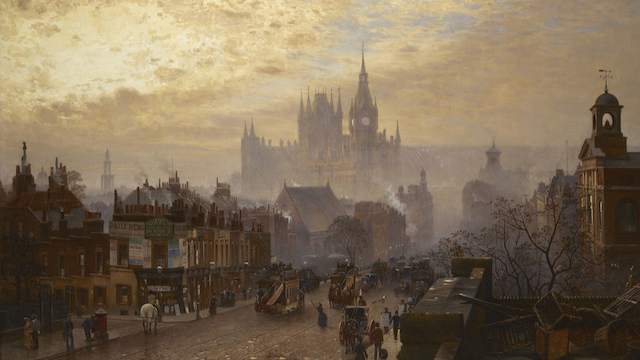The Society is delighted to welcome
Professor Alessandra Calanchi “Bianca” to membership. Prof. Calanchi is renowned scholar of the Sacred Canon with numerous books, academic papers, articles, and appearances related to her Sherlockian and Watsonian research. She is a member of Uno Studio in Holmes and is a professor of Anglo-American literature at Urbino University in Italy.
Please welcome Alessandra with the Society’s greeting to new members: “You have been in Afghanistan, I perceive.”
Her partial C.V. follows:
Alessandra Calanchi is assistant professor of Anglo-American Language and Literature at the University of Urbino “Carlo Bo”. She has published books in English and Anglo-American Literatures and Comparative Studies, such as Vicini lontani. Solitudine e comunicazione nel romanzo americano (1990), Quattro studi in rosso. Lo spazio privato maschile nella narrativa vittoriana (1997), and Dismissing the Body. Strange Cases of Fictional Invisibility (1999). She has dealt with such issues as identity, body representations, masculinity, her major interests lying in the relations between literature and cinema and in Jewish-American fiction. Among her essays in this latter field, see “The Victim : la memoria come detection” (Il recupero del testo , eds. Fink-Morisco, 1988), “Millions of Leaves. Metafore della memoria nel romanzo di Saul Bellow More Die of Heartbreak” (Memoria e tradizione nella cultura ebraico-americana, eds. Fink-Morisco, 1990), “Uncomfortable Connections: Zipping/Unzipping Identity” (Intertextual Identity. Reflections on Jewish-American Artists, eds. La Polla-Morisco, 1997), and “The Dangling Jewish American Identity and the Canon in Saul Bellow’s Earlier Novels” (Merope, Pescara, anno XI, n.31, 2000, pp.69-93). Recently she has edited American Sherlockitis. Ovvero, come Sherlock Holmes conquistò il Nuovo Mondo (Milano 2005). She is a contributor to Cinemasessanta.
Books
1997 Quattro studi in rosso. Lo spazio privato maschile nella narrativa
vittoriana, Cesena, Il Ponte Vecchio, 1997 (monography)
2001 Arthur Conan Doyle, 221B Baker Street. Sei ritratti di Sherlock Holmes, (bilingual), Venezia, Marsilio (transl. & ed.)
2003 Arthur Conan Doyle, La maledizione dei Baskerville, annotated edition ed. by Philip Weller, Milano, Hobby & Work (transl.) Now being republished in montlhly instalments by the SherlockMagazine (2013-2014).
2005 Sherlock Holmes in America: “American Sherlockitis”, ovvero come Sherlock Holmes conquistò il Nuovo Mondo, “Sherlock Magazine”, no. 5, Delos Books, November (ed.).
2007 I mille e uno Sherlock Holmes, “Linguae &”, special issue, I mille e uno Sherlock Holmes/The Thousand and One Sherlock Holmes no. 2 (co-ed. with G. Ovarelli).
2008 J. M. Gregson, Sherlock Holmes e il mistero del golf club, “Sherlock Magazine”, October (transl.).
2013 P. Growick, Sherlock Holmes e il diario segreto del dottor Watson, Delos Books, Milan (transl.).
Essays and articles
“Rovinare le sacre simbiosi: Rosencrantz, Guildenstern, e Sherlock Holmes”, Poetiche, 4-5, December 1996, Mucchi, Modena, pp.145-55.
” ‘Others will follow’: lo strano caso di Jekyll, Hyde e Sherlock Holmes”, RSV (Rivista di Studi Vittoriani), 5, III, Pescara, January 1998, pp.133-43.
“Da St.Petersburg a Salt Lake City: scenari d’America in The Dynamiter, A Study in Scarlet e The Valley of Fear“, in R.Baccolini, C.Comellini e V.Fortunati (eds), Culture di lingua inglese a confronto, Bologna, CLUEB, 1998, pp.67-76.
“L’Avventura dell’Enciclopedia”, an afterward to: S.Guerra ed E.Solito, I diciassette scalini. Enciclopedia di Sherlock Holmes, Roma, Edizioni Il Torchio, 1998,
pp.143-45.
(Book review) I casi proibiti di Sherlock Holmes (by Enrico Solito), Delitti di Carta, Bologna, CLUEB, April 1999, pp.135-36.
“Un’americana alla corte di Sherlock”, in Leggere Donna, n.s., 85, March-April 2000, pp.31-32.
(Book review) “L’avventura della Lasiocampa quercus, ovvero, recensione in forma di apocrifo di Come fu ucciso Umberto Eco di G.Celli”, in The Strand Magazine (“Uno Studio in Holmes”), II n.s., September 2000, pp.2-4.
“La moglie di Sherlock Holmes e altri paradossi: lo strano caso della riscrittura di genere”, in Le riscritture del postmoderno. Percorsi angloamericani, eds O.De Zordo and F.Fantaccini, Bari, Palomar, 2002, pp.313-333.
“L’unica professione per un gentiluomo? Lo Sherlock Holmes fin de siècle da Baker Street all’America di frontiera”, in Maschilità decadenti. La lunga fin de siècle, eds M. Pustianaz and L. Villa, Bergamo UP, Edizioni Sestante, 2004, pp. 239-253.
“Chiamatemi Watson. Nuove frontiere degli ‘apocrifi’ angloamericani”, in “Linguae &”, I mille e uno Sherlock Holmes/The Thousand and One Sherlck Holmes, eds. A.Calanchi & G. Ovarelli, no. 2, 2007, pp. 93-106.
“ ‘Reasoning from an armchair’: A Study on Sherlock Holmes’s Homely Masculinity”, in RSV (Rivista di Studi Vittoriani), n. 24-25, anno XII-XIII, 2007/2008, pp. 7-33.
“Notes on the Italian Sherlockscape”, in Italy & Sherlock Holmes, eds. Enrico Solito and Gianluca Salvatori, The Baker Street Irregulars International series, The Baker Street Irregulars, New York, 2010, pp. 7-18.
“Mr Sherlock Holmes and Dr John Watson: interfacing science and fiction in the ‘Sacred Canon’”, in The Case and the Canon. Anomalies, discontinuities, metaphors between science and literature, eds A.Calanchi, G.Castellani, G.Morisco, G.Turchetti, Vandenhoeck and Ruprecht V & R Unipress, Goettingen 2011, pp. 137-144.
“Dal Sacro Canone al Grande Gioco: per una teoria degli apocrifi”, in Fictions. Studi sulla narratività, ed. by Maurizio Ascari & Francesca Saggini, Fabrizio Serra editore, Pisa – Roma, X, 2011, pp. 120 (pp. 83-92).

